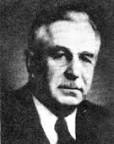Allport, Floyd Henry

Bio: (1890-1979) American psychologist and social psychologist. Floyd Henry Allport received his doctorate from Harvard University in 1919 and after that, he stayed to teach there. From 1924-1956 he was a professor of social psychology and political psychology at Syracuse University, and he occasionally taught as a visiting professor at Berkeley. He applied the methods of social psychology to the study of religion, politics, industry, and local communities.
Together with William McDougall and Edward A. Ross Allport is considered to be one the founders of social psychology, but Allport is the first scientist to engage in experimental social psychology. Apart from using experiments Allport is known for using research methods of field studies, attitude measurement, and behavioral observation. Allport considered social psychology only as a subfield of psychology, while Edward Ross considered it to be a part of sociology. Allport's approach to social psychology was behavioral, in contrast to the instinctive approach of William MacDougall. Allport saw social psychology as an experimental science focused on the individual behavior in the group. The goal of social psychology is to observe and explain the mutual influences between individuals. In his book Social Psychology (1924) Allport presented a behavioristic interpretation of Freudian concepts and mechanisms. In this book, he introduced new concepts: social facilitation, afferent and efferent conditioning, social increment and decrement circular and linear social behavior, prepotent reflexes and habits, the impression of universality, coacting and interacting groups, attitudes of conformity, and self-expressive social attitudes.
Allport, in the article “The Measurement and Motivation of Atypical Opinion in a Certain Group” (1925), written with D. H. Hartman, shows that extremists on both the left and right side of the political spectrum exert the same basic personality characteristics. In the book Institutional Behavior (1933), Allport analyzed the motivations, habits, and attitudes of people working in different institutions - the nation, the church, the law, and industry. With the article “Toward a Science of Public Opinion” (1937) Allport becomes one of the first political behaviorists.
One of his greatest contributions to social psychology is the J-curve hypothesis of conforming behavior presented in the article “The J-curve Hypothesis of Con-forming Behavior” (1934). This hypothesis states that the percentage of the overall population that follows social rules, that is, shows conforming behavior, is distributed on the graph in reverse J-curve; which means that the overwhelming majority of people strictly follow social rules, while with an increment of severity of the deviation from the rules percentage of people drops sharply.
In the latter part of his carrier Allport become disillusioned with the behaviorist approach and developed a new highly abstract approach that he named “event-system theory”, which he presented in the book Theories of Perception (1955). The event-system theory is an open-system approach. It sees social structure as made of cycles of events, with those events returning to themselves to complete the cycle. The whole social structure is made of events, that is, the interstructuring of specific acts. : “Causation, in the structural view, is not historical nor linear, but continuous, time independent, and reciprocally cyclical. One looks for it neither in society nor in the individual, as traditionally seen as separate levels or agencies, but in the compounded patterns of structuring which are the essential reality underlying both” (1962: 19). Individuals interact to maintain intrinsic rewards that stem from patterned behavior, and to insure that the structure will be maintained. Group norms do not direct individual behavior because people adopt them as internal moral rules, but they follow the rules simply to preserve the social structure they are engaged in. Allport measured degree of structurance via the negative-causation technique. The relevance of some behavior for maintaining the structure is measured by an index of interstructure. Thus, the individual is a product of a matrix of participation in many collective structures, while individual personality only serves as a tangential structure. Allport's work, both theoretical and experimental, was the main guideline for American psychologists for many decades.
Fields of research
Actors Community Conformity Control, Social Cooperation Culture Customs, Social Education Group Industry Institution and Organization Integration Media Morality Motivation Personality Politics Prejudice Psychology Public Opinion State VotingTheoretical approaches
BehaviorismMain works
“The Influence of the Group Upon Association and Thought”; in Journal of Experimental Psychology (1920);
Social Psychology (1924);
“The Measurement and Motivation of Atypical Opinion in a Certain Group”; in American Political Science Review (1925);
““Group” and “Institution” as Concepts in a Natural Science of Social Phenomena”; in American Sociological Society Publications (1927);
“The Prediction of Cultural Change”; in S. A. Rice (ed.), Methods in Social Science (1931);
Students’ Attitudes: A Report of the Syracuse University Reaction Study (1931);
“Psychology in Relation to Social and Political Problems”; in Paul S. Achilles (ed.), Psychology at Work (1932);
Institutional Behavior (1933);
“The J-curve Hypothesis of Con-forming Behavior”; in Journal of Social Psychology (1934);
“Toward a Science of Public Opinion”; in Public Opinion Quarterly (1937);
“The Causation of Anti-Semitism: An Investigation of Seven Hypotheses”; in Journal of Psychology (1952);
“The Structuring of Events: Outline of a General Theory With Applications to Psychology”; in Psychological Review (1954);
Theories of Perception and the Concept of Structure (1955);
“A Structuronomic Conception of Behavior; Individual and Collective: 1. Structural Theory and the Master Problem of Social Psychology”; in Journal of Abnormal and Social Psychology (1962).

